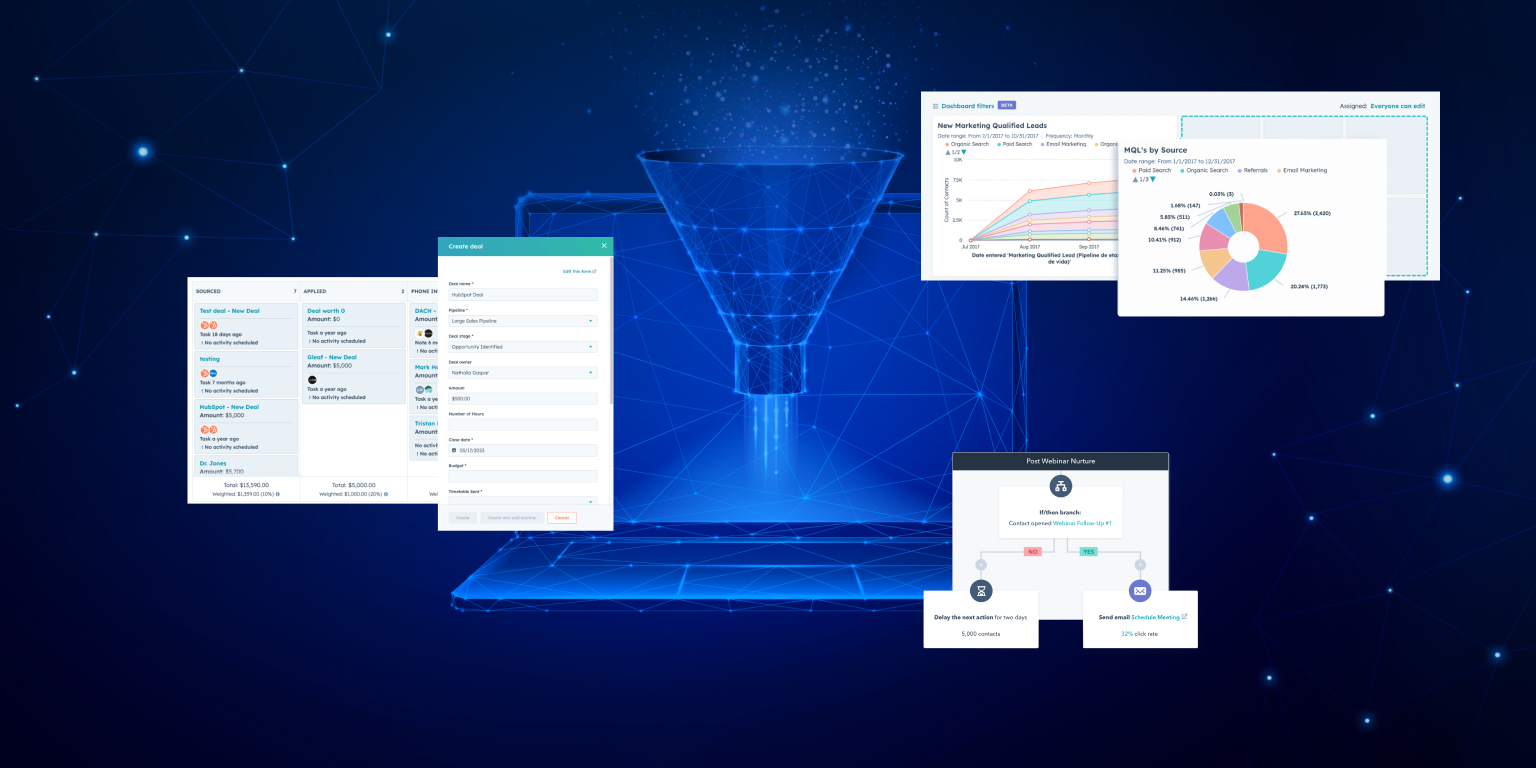
In 2024, thought leadership holds more relevance than ever. Recently, content marketing has shifted from mere creation to a battle against AI-generated content. People now recognise that content lacking a human touch is insubstantial. The essence that imbues words with strength lies in the human component – thought leadership.
Thought leadership is vital in guiding discourse and shaping perspectives today. It reflects human insight, experience, and critical reflection, fostering authentic dialogue and trust.
Moreover, thought leadership transcends industries, inspiring innovation and driving positive change. It represents the pinnacle of human expression and intellect, guiding us through complex challenges with wisdom and resilience.
You’ve probably heard these annoying buzzwords before "Thought Leadership" and "Demand Generation". They’re usually thrown around by both ends of the boardroom with one side arguing for a ‘demand generation’ strategy and the other calling for a ‘thought leadership’ strategy.
Well here’s the plot twist: their existence is symbiotic by nature.
Thought leadership which doesn’t result in demand generation is a wasted investment of both time and money. Likewise, implementing demand generation strategies without genuine, qualified thought leadership to back it up, is also a waste of your valuable resources.
The Goldilocks zone is striking a balance between the two.
But what exactly is the meaning of demand generation and thought leadership? How can businesses practically implement these concepts to enhance sales opportunities within their digital transformation?
Let’s look at some examples.
What is demand generation?
Demand generation is simply the process of generating demand. Profound, right? More specifically, demand generation is the process of creating targeted marketing campaigns which not only seek to increase the demand for your product or service, but also works to increase brand visibility and awareness.
With the rising costs of paid advertising methods such as Facebook Ads and Google Ads, there has never been a smarter time for businesses to invest in a demand generation strategy to reduce the cost of new leads and increase marketing ROI. The best part about implementing a demand generation strategy, is it doesn’t have to be difficult, time consuming or expensive.
Demand generation works well with targeted content marketing (or inbound marketing) strategies, whereby you create a piece of content to solve a problem for your ideal prospect. To do this, you must consider content type, form and material. Using your existing knowledge base, consider the most common ground-level problem your previous clients have approached you to fix.
Next, find a way to solve that problem in a quick, concise manner. This provides free, immediate value to your ideal prospect, increasing their awareness of your brand and the solutions you provide. This process is most economical when it is outsourced to an expert done-for-you content agency such as fileroom. But how is this mysterious elixir created? And how can you know it’s exactly what your prospect is searching for?
Building a demand generation strategy
All it takes, is a bit of empathy. Start by thinking like a doctor. How does your audience like to consume content? Where are they in their customer journey? What symptom of an underlying problem are they seeking a remedy for? Try to reverse engineer their journey from client to prospect to cold lead. Asking these questions is key to creating content that holds your prospect’s attention and generates demand.
Targeting your prospect’s ‘pain point’ has become a popular marketing adage, but the flaw with this perspective is it fails to treat your prospect with the respect they deserve. So, instead of thinking about prospect vulnerability to your sales strategy, approach the topic in a more empathetic manner with the sole intent to truly solve one of their ground-level problems with your piece of content.
This is where the power of demand generation lies. Once you have solved a ground-level problem or obstacle for your prospect in a very concise, economical matter, they will start to consider what ‘higher-chain’ problems you may be able to diagnose and solve for them.
This is the beginning of a very mutually beneficial relationship. Your prospect becomes a client because you provide the remedy they never knew they needed. This benefits your business, as you’re now able to grow and help more people. Symbiosis!
What is thought leadership?
Thought leadership is business leadership but on a grander, industrial scale: industry leadership. Understanding the principles of thought leadership is more important than ever before. With so much white noise being published every single day through websites, social media platforms and newsletters, it’s getting harder for genuine thought leaders to stand out. Despite it being easier than ever before to identify, connect and communicate with your ideal prospect, their attention spans have reduced while their expectations increase with every piece of content they interact with.
With literally millions of content pieces being published every single day it’s no surprise audiences are becoming fatigued quicker and easier by new content. It’s cognitive overload. That’s how thought leadership establishes itself as your best option for cutting through the noise.
Let’s explore thought leadership through a different lens. Thought leadership might be considered on par with establishing authority within your industry. Winning some industry-endorsed accolades can help businesses and individuals build an authoritative, trusted brand. But let’s break it down further. The very word ‘authority’ holds another clue as to how one can establish authority: become an author. How? By publishing content.
It quickly becomes apparent that the most efficient way to become a thought leader in your field is by publishing content. But before you dust off your old typewriter, let’s explore exactly what content should be ‘published’ and how much effort might be expected to achieve this.
Insights into thought leadership
A hundred years ago, publication was almost exclusively reserved for society’s elites. The market for books was considerably smaller, while the printing costs were significantly higher. Quality mass market paperbacks didn’t become common until the late 1940s. Therefore, being an author was not only reserved for those wealthy enough not to need more business, but publication wasn’t exactly profitable.
Fast forward to today, and publication of content has never been easier. Businesses have the ability to publish their message to millions of prospects in an instant. They’re also able to completely outsource the content creation pipeline to expert agencies, enabling them to build authority while they sleep.
But publishing content can be a double-edged sword. Expectations are rising. A 2020 study by LinkedIn and Edelman returned some staggeringly cautionary findings with insights into thought leadership influences and B2B purchasing behaviours across the US, Europe and Asia Pacific:
-
Only 32% of decision makers gained insights from thought leadership content
-
29% rated the content quality as “mediocre to very poor”
-
25% decided not to engage with an organisation after they consumed their content.
But it’s not all doom and gloom for those who approach thought leadership the right way. The same study found some promising insights:
-
51% purchased new products or services they hadn’t previously considered after consuming thought leadership content
-
41% were more likely to work with an organisation that produced thought leadership content over those that didn’t.
And finally, some actionable advice for thought leadership content producers:
-
Provide perspectives on new challenges and opportunities
-
Don’t just be “selling something”
-
Be timely and brief.
So, what are we to learn from all this? For starters we can safely say that quality trumps quantity. Businesses with a focus on content quantity over quality run the very real risk of repelling prospects with invaluable and mediocre content. Bad content will damage your brand.
On the flip side, genuine thought leaders who publish authoritative, insightful and timely content in a concise manner can expect an increase in lead generation and prospect conversions. Extrapolating from this data, one might even suggest that brands have an increased chance at retaining clients for longer periods of time.
AI Content into the Thought Leadership Strategy
We cannot deny that AI content-generating tools are great platforms that speed up the process. However, an overreliance on them can harm your content. AI-generated content often prioritises search engine optimisation over meaningful human connection, regurgitating common ideas and keywords without introducing fresh insights. Search engines such as Google can discern if a content was created by a bot or a human, and pages that excessively rely on AI-generated content may suffer lower rankings. Google prioritises human-to-human connections.
Thought leadership, on the other hand, focuses on crafting specialised, captivating material tailored to resonate with key target audiences. When combined with AI tools, they form a powerful partnership capable of producing content imbued with depth, insight, and authenticity, facilitating genuine engagement and fostering lasting relationships. While AI enhances proficiency in content writing, thought leadership ensures that content transcends mere SEO utility to truly connect with and inspire audiences on a profound level.
Our 3 key takeaways
Be timely: your prospects value insights that are timely in the issues they address. No one’s going to read a “How to survive coronavirus” leaflet after it’s been eradicated.
Be concise: your prospects have short attention spans and even shorter deadlines. Deliver them the value they seek quickly and concisely. No one ever reads the full T&Cs.
Be genuine: your prospects are smarter than you may think. Be genuine in the content you publish. Be genuine in your desire to help others. Be genuine in offering content that is valuable, timely and concise for your prospects. Above all, respect your prospects. Have you ever noticed there’s no ‘prospect’ without ‘respect’?! ;-)
It’s vital for businesses and brands to find a healthy balance in their demand generation and thought leadership strategies. When done correctly, these two concepts will feed back into each other like a flywheel.
Thought leadership content generates demand. Demand creates thought leaders.
If this all seems a bit overwhelming, it doesn’t have to be. Publishing authoritative, timely content that will boost your brand is a difficult task. If it wasn’t, everyone would be doing it. Finding a specialised agency to fulfil your content creation needs can not only reduce your stress but speed up the content creation timeline and increase prospect engagement rates.
If you would like to discover solutions to your content creation needs, fileroom offers a done-for-you service, taking all the stress and guesswork out of authoritative content creation. With us taking care of your demand generation and thought leadership content needs, you can get back to what you’d rather be doing.
Start a conversation today at fileroom
.png)
.png)



.png)
.png)


.png?width=169&height=177&name=Group%201855%20(1).png)
.png?width=956&height=343&name=Group%201865%20(3).png)
.png?width=155&height=95&name=Group%201854%20(1).png)


.png)






